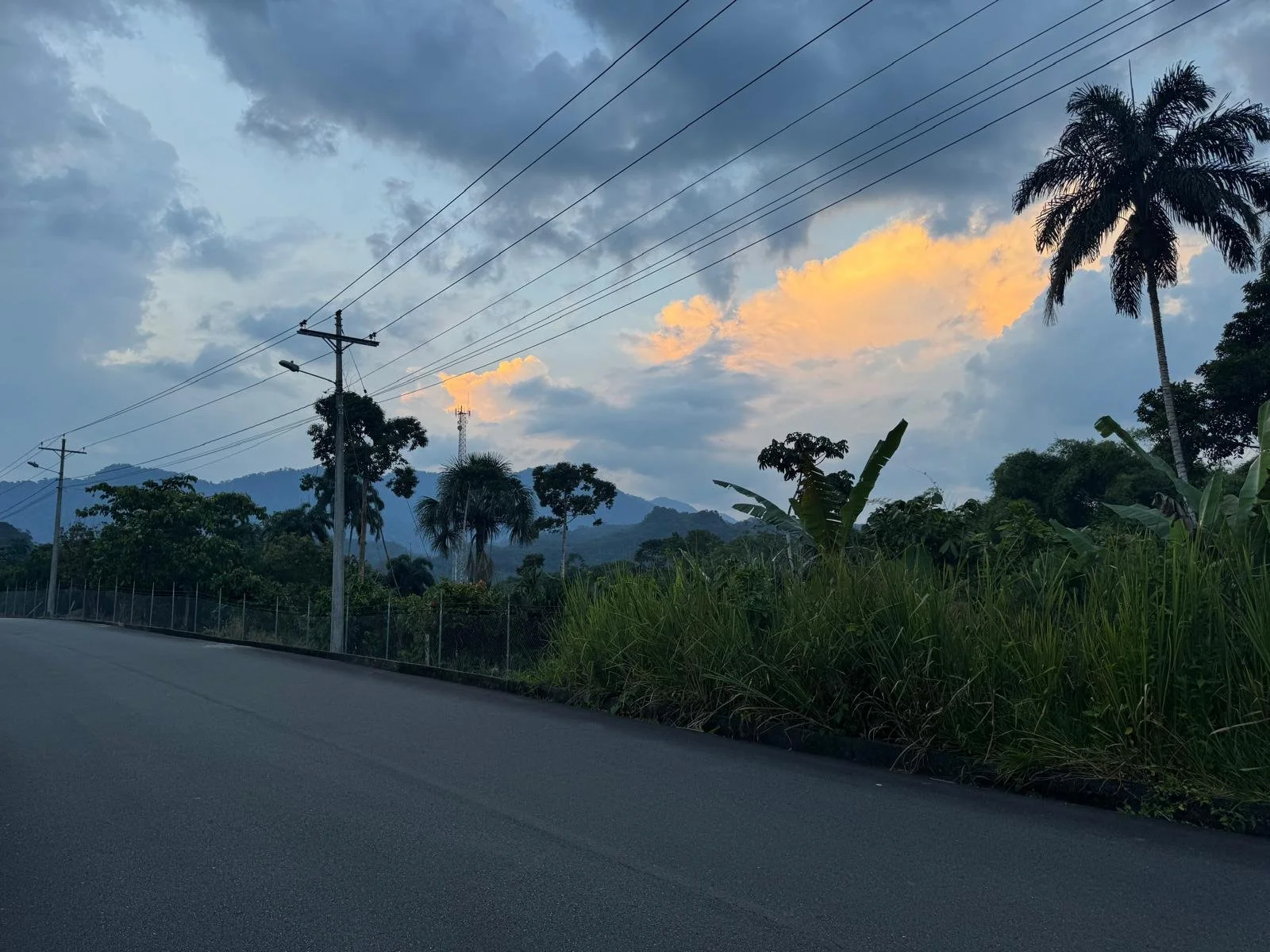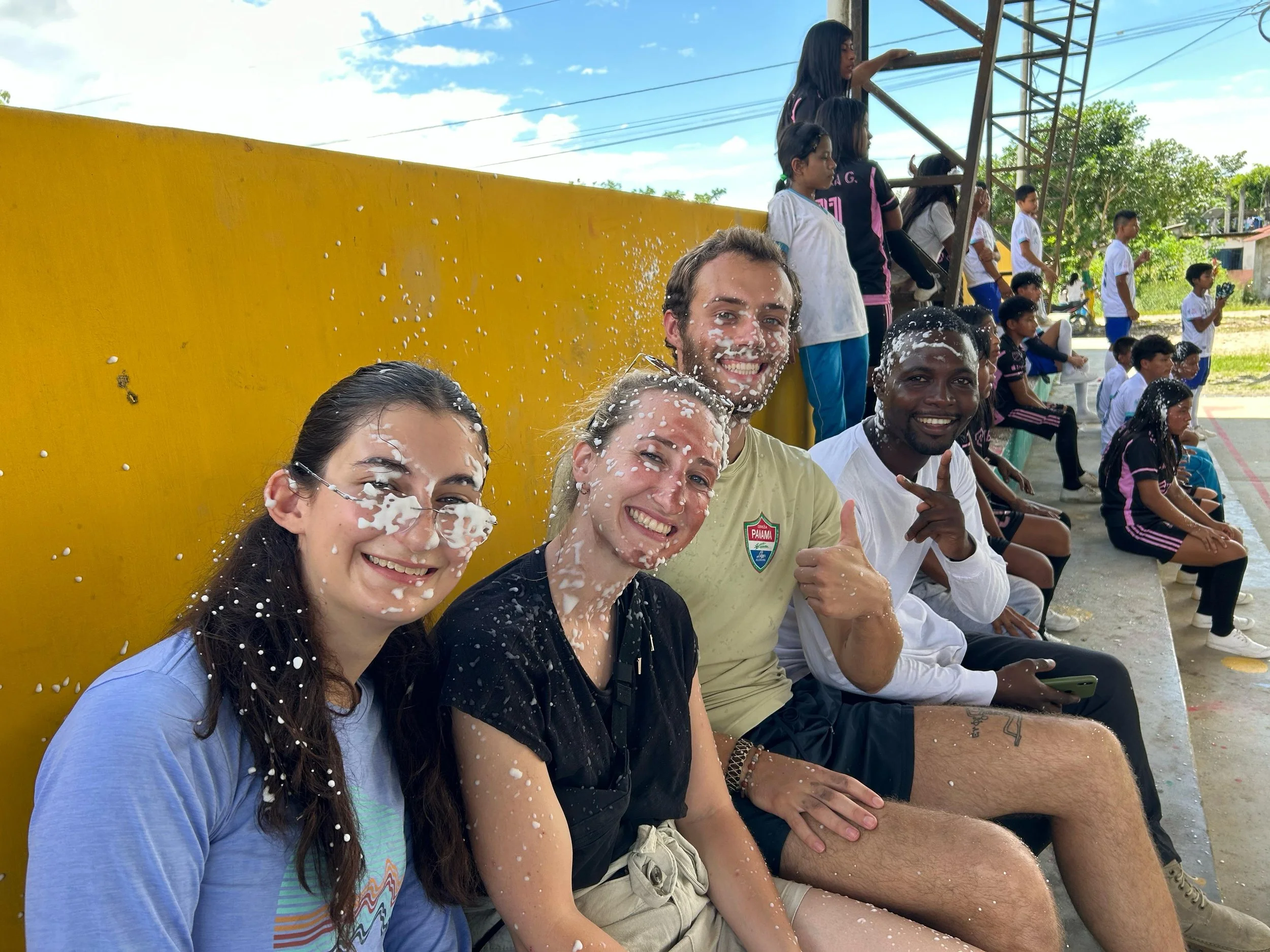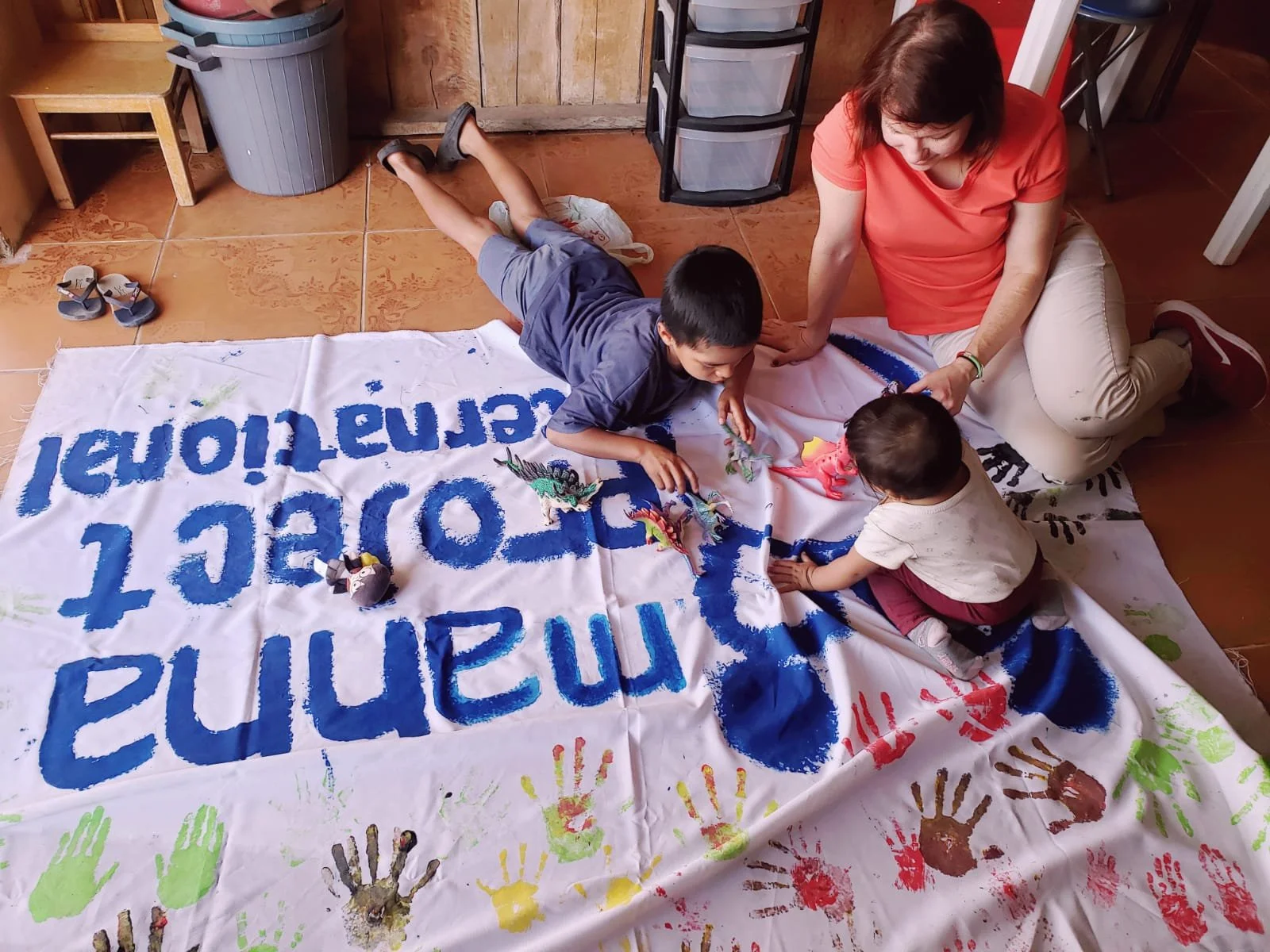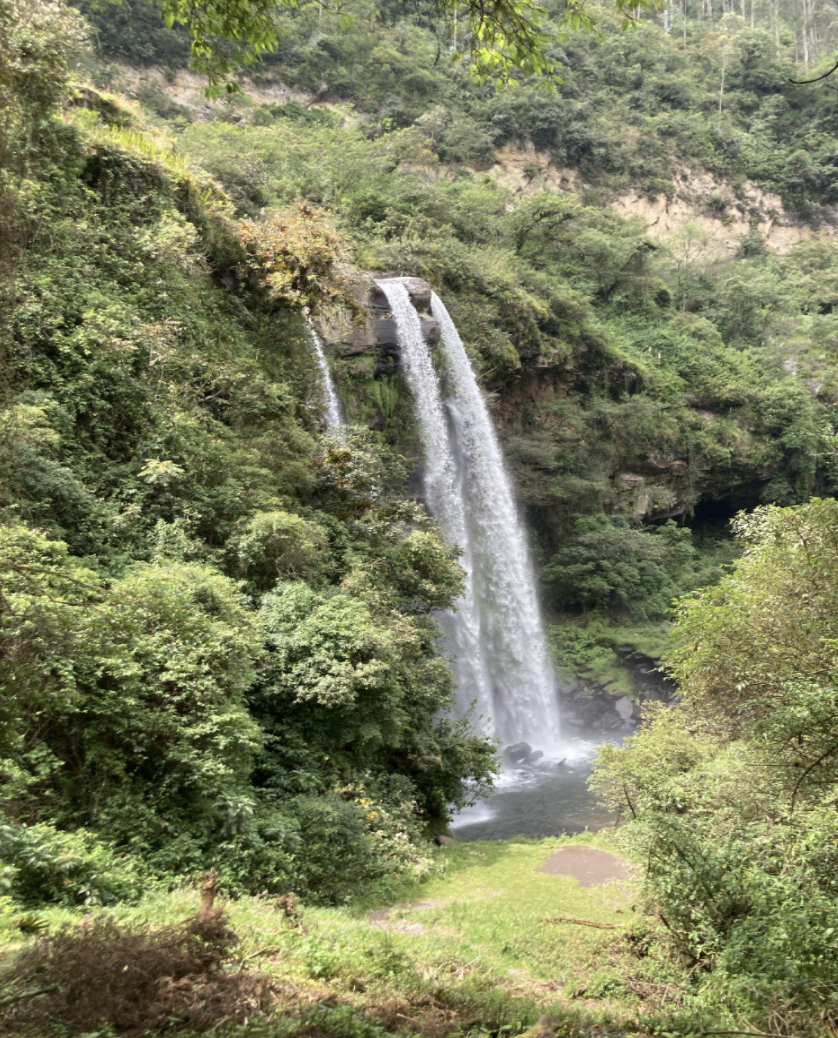By: Chelsea Hipwell
One of my favorite parts about traveling is the opportunity meet people that I never would have met otherwise. At Manna Project International (MPI), I’ve had the chance to meet a range of students: young kids at our fun club, middle schoolers in our English classes, and adult students at our English conversation club.
I’ve also met Carmita. Carmita is the mother of one of our English students, Mathias, who’s 12 years old and in English level 3. We got to talking while she waited for Mathias’ class to finish up, and by the end of the conversation she had invited the entire group of volunteers over to her house to try Ecuadorian bolones, a cuisine from the coast. The opportunity to both try a new food and get to spend time with someone outside of the Centro (Center) where we work was a special invitation, so the next weekend we got a group together for un desayuno ecuatoriano (Ecuadorian breakfast).
Carmita had invited Gaby, a university student and friend from church, to join us for breakfast. She shared about her experiences in vet school and her favorite things to do in Quito, and we chatted in English and Spanish about our plans for the summer and her cousins in Miami. Our breakfast consisted of pork bolones, cheese bolones, fried eggs, tomate de árbol (tree tomato) juice, coffee, salsa de tomate de árbol, and then…chocolate cake! It felt as if we had known Carmita’s family for so much longer – we all jumped right in to help in the kitchen, served drinks, and helped clean up. Carmita’s husband, Renan, played a mix of Ecuadorian songs and popular American music while we chatted and waited for the food to be ready. Mathias taught us his version of Uno with Ecuadorian rules, and then attempted to teach us another card game called Cuarenta (Forty), which we tried and failed to grasp, but we still had a lot of fun anyway.
Adjusting to the holistic internship experience took longer than I expected, and Carmita’s invitation was a special way to slow down and see a side of Ecuador we hadn’t yet experienced in our rush to sightsee, hike, and take tons of photos. I appreciated Carmita’s willingness to share her passion for cooking and culture with us, and her patience in getting to know us. We already have plans to visit again soon for another round of bolones.














